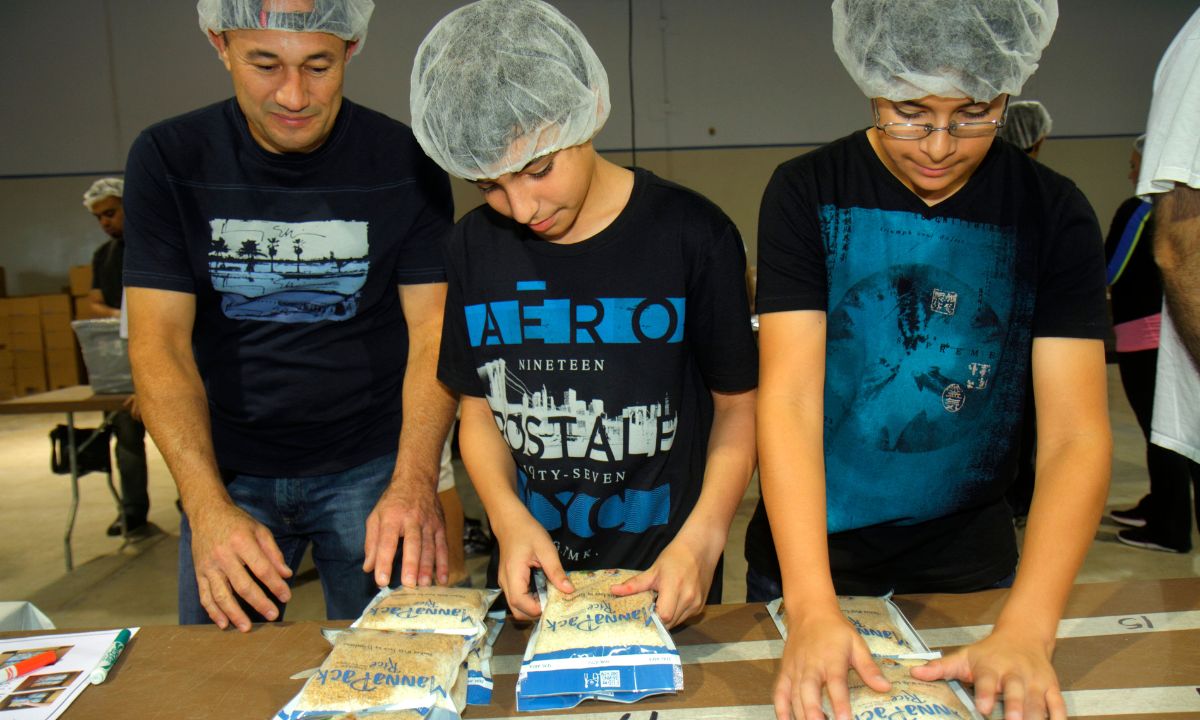Let’s Bring Project-Based Learning and Community Service Into the 21st Century
Inwood: It’s time to stop wasting students’ time with slide-deck projects and checkbox community service and let students engage in the real world.

Get stories like this delivered straight to your inbox. Sign up for The 74 Newsletter
Project-based Learning isn’t new. It’s more than a century old, rooted in John Dewey’s belief that children learn best by doing. That idea has stood the test of time. Research continues to confirm that students retain more when they engage with content actively, with their minds, hands, and hearts.
Despite its promise, traditional PBL often collapses into superficial showcases: glorified slide decks and videos passed off as deep learning. Kids have been making presentations since kindergarten; by high school, it’s more ritual than rigor. It’s an astonishingly inefficient use of time, talent, and opportunity.
I know this because I’ve lived it. I helped design and launch several of Los Angeles’ most successful project-based charter schools, including Larchmont Charter and Valley Charter, between 2004 and 2014. I’ve taught mathematics, earned a master’s in curriculum construction from Stanford University and worked alongside brilliant educators committed to making learning meaningful. And I believe it’s time to evolve PBL — not discard it, but bring it fully into the world our students actually live in.
That world is complex, unpredictable and increasingly polarized. It requires collaboration, communication, creativity and adaptability. So our learning models must meet that challenge. We can do this by fusing the best of PBL with the best of community service —and then modernizing both.
Too often, “community service” in schools becomes a checkbox. Students log hours doing well-intentioned but disconnected tasks. They pack food boxes or clean park trails. These efforts are not without value, but they’re rarely linked to any larger purpose, and they rarely push students to think, lead, or grow.
What if, instead of logging hours, students designed and implemented “community impact projects?”
Imagine a model where students start by exploring who they are: what drives them, what skills they bring, what kind of work energizes them. Some are motivated by a specific cause. Others want to develop a skill or explore a career path. Some are simply determined to make a visible difference. These internal motivations matter. They shape what a student is willing to commit to over time.
From there, students look outward. They conduct interviews, collect data, read local news and observe their neighborhoods. What are the real needs? Where are the gaps? Who’s being left behind?
This isn’t abstract. It’s concrete inquiry, grounded in the real world. Students may notice that elderly neighbors feel isolated. Or that a local creek is filling with trash. Or that a group of small businesses lack digital tools to compete. The key is that students are asking questions and listening before deciding what to do.
Once they’ve identified a need, they study the landscape. Who is already working in this space? Which nonprofits, businesses, agencies or coalitions are active? What partnerships could help — or complicate — what they want to accomplish?
This step is critical. It builds awareness and respect. Students begin to understand that community work doesn’t happen in a vacuum. There are always stakeholders, histories and existing efforts to consider.
Then comes the real design work. Students craft a solution: something tangible, time-bound and achievable. They seek feedback, revise and prepare to launch. The process is collaborative and iterative, grounded in real-world constraints. It’s not a simulation. It’s not a game. It matters.
Planning follows. Students map out a schedule, align tasks to calendar dates, set milestones and build in moments for reflection. They’re expected to track progress and share it — publicly — with their peers, their partners and their communities.
And finally, they implement. They call adults. They troubleshoot. They adapt. They reflect. They finish.
This is project-based learning, but deeper. It’s community service, but smarter. It’s a model that merges the two and layers in best practices from entrepreneurship, civic action and systems thinking.
Students leave with real skills. They know how to write a persuasive email. How to manage a timeline. How to deal with silence, rejection, ambiguity and failure. They gain confidence — not the kind that comes from praise, but the kind that comes from doing something real.
Schools benefit too. This model doesn’t require new tech or expensive consultants. It requires a shift in mindset.
I’ve implemented this exact course with student cohorts — it’s not theoretical. Designed to require fewer than 20 classroom hours, most of the heavy lifting happens outside class, driven by the students themselves. An English teacher can guide email writing and pitches, a history or social science teacher can support research, and science teachers can consult as needed. But really, any educator can take part through occasional advisory check-ins. Grouping students with similar project structures allows them to act as peer support teams — just like start-up founders or social entrepreneurs do when backed by shared venture networks.
With smart scaffolding, schools can support this work without overburdening staff.
Communities gain, too. They get young people who show up, listen and contribute—not for a few required hours but with purpose and persistence.
And something else happens.
In a time of institutional distrust, social division and adult disillusionment, these projects create connection. When a 16-year-old calls a local business, works with a senior center or builds something useful for a community group, they aren’t just “learning” — they’re building trust.
This is what schools should be doing: helping students feel capable, connected and purposeful. Helping them become the kind of citizens we all hope to live among.
Let’s not waste this moment.
Because when students learn they can make a difference, they don’t just thrive in school. They start to believe in themselves — and in each other.
Get stories like these delivered straight to your inbox. Sign up for The 74 Newsletter

;)
